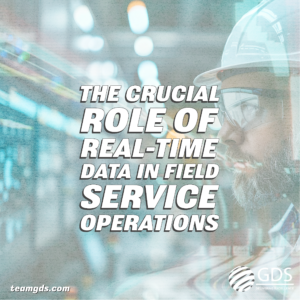Understand the Basics of Restaurant Inventory Management
Understand the Basics of Restaurant Inventory Management
Author: GDS
Restaurant inventory management is a crucial part of running a successful business. It helps restaurant owners keep track of food supplies, allowing them to make sure they stock the right items at the right quantities and time intervals. This ensures that customers are supplied with what they need and that goods remain fresh without taking up too much storage space. Restaurant inventory management also allows restaurants to track goods coming in from suppliers, as well as food that is used, lost, or left over. With the right inventory management system, restaurants can improve their efficiency and profitability. Understanding the basics of restaurant inventory management is a must for any business owner.
Restaurant inventory management is a crucial part of running a successful business. It helps restaurant owners keep track of food supplies, allowing them to make sure they stock the right items at the right quantities and time intervals. This ensures that customers are supplied with what they need and that goods remain fresh without taking up too much storage space. Restaurant inventory management also allows restaurants to track goods coming in from suppliers, as well as food that is used, lost, or left over. With the right inventory management system, restaurants can improve their efficiency and profitability. Understanding the basics of restaurant inventory management is a must for any business owner.
What is Restaurant Inventory Management?
Restaurant inventory management is the process of overseeing and controlling the storage, handling, and movement of goods in a restaurant. It involves tracking customer demand for food items and ordering new supplies when needed to maximize profits while minimizing waste. Restaurant inventory management also includes monitoring levels of stock, analyzing trends in sales, and keeping an eye on expiration dates to ensure that food items remain fresh and safe for customers. The right inventory management system can help restaurants streamline their operations, boost efficiency, and increase profits.
What is Restaurant Inventory Management?
Restaurant inventory management is the process of overseeing and controlling the storage, handling, and movement of goods in a restaurant. It involves tracking customer demand for food items and ordering new supplies when needed to maximize profits while minimizing waste. Restaurant inventory management also includes monitoring levels of stock, analyzing trends in sales, and keeping an eye on expiration dates to ensure that food items remain fresh and safe for customers. The right inventory management system can help restaurants streamline their operations, boost efficiency, and increase profits.
Benefits of Restaurant Inventory Management
By using a restaurant inventory management system, businesses can maximize the efficiency of their operations and enhance customer experience. Restaurant owners benefit from having up-to-date information about stock levels and customer demand, so they can order new items in a timely fashion without overstocking. This prevents food waste and allows restaurants to maintain freshness while meeting customers’ needs. Additionally, having access to real-time data about sales trends and customer preferences helps restaurants better manage their inventory, optimize stock levels, and adjust pricing strategies as needed.
- Keeps track of customer demand for food items and orders new supplies when needed
- Monitors levels of stock analyze sales trends and keep an eye on expiration dates to ensure food safety
- Helps restaurants streamline operations, boost efficiency, and increase profits
- Prevents food waste by ensuring timely ordering without overstocking
- Provides access to real-time data about sales trends and customer preferences
- Allows restaurants to better manage their inventory, optimize stock levels, and adjust pricing strategies as needed.
Benefits of Restaurant Inventory Management
By using a restaurant inventory management system, businesses can maximize the efficiency of their operations and enhance customer experience. Restaurant owners benefit from having up-to-date information about stock levels and customer demand, so they can order new items in a timely fashion without overstocking. This prevents food waste and allows restaurants to maintain freshness while meeting customers’ needs. Additionally, having access to real-time data about sales trends and customer preferences helps restaurants better manage their inventory, optimize stock levels, and adjust pricing strategies as needed.
- Keeps track of customer demand for food items and orders new supplies when needed
- Monitors levels of stock analyze sales trends and keep an eye on expiration dates to ensure food safety
- Helps restaurants streamline operations, boost efficiency, and increase profits
- Prevents food waste by ensuring timely ordering without overstocking
- Provides access to real-time data about sales trends and customer preferences
- Allows restaurants to better manage their inventory, optimize stock levels, and adjust pricing strategies as needed.
How Does Restaurant Inventory Management Work?
Restaurant inventory management is a critical yet often overlooked part of managing a successful restaurant. It involves tracking customer demand for food items to determine when and how much should be ordered from suppliers, monitoring stock levels to ensure food safety and freshness, analyzing sales trends to adjust pricing strategies as needed, and streamlining operations to boost efficiency and profits. By keeping track of customer demand, monitoring stock levels, analyzing sales trends, and streamlining operations, restaurant inventory management helps restaurants stay organized while optimizing their stock levels and pricing strategies to maximize profits.
How Does Restaurant Inventory Management Work?
Restaurant inventory management is a critical yet often overlooked part of managing a successful restaurant. It involves tracking customer demand for food items to determine when and how much should be ordered from suppliers, monitoring stock levels to ensure food safety and freshness, analyzing sales trends to adjust pricing strategies as needed, and streamlining operations to boost efficiency and profits. By keeping track of customer demand, monitoring stock levels, analyzing sales trends, and streamlining operations, restaurant inventory management helps restaurants stay organized while optimizing their stock levels and pricing strategies to maximize profits.
Keeping Track of Customer Demand and Ordering Supplies When Needed
One of the most significant tasks in restaurant inventory management is ensuring that the supplies are ordered as per customer demand. By using accurate sales forecasting, restaurants can anticipate customer demand and order from suppliers accordingly. This helps them balance stock levels so they have enough to meet customer demands without overstocking on perishable food items that could spoil or go to waste.
Overview of Tools Used in AP Automation
AP automation tools are designed to streamline and automate the accounts payable process. These tools can be used to capture, store, retrieve, and route invoices for approval. Additionally, they can help vendor payments and reconciliation processes. By automating processes such as data entry, invoice processing, payment routing, and reconciliation, AP automation tools reduce labor costs associated with manual tasks. Furthermore, they help improve accuracy and visibility into financial data while eliminating errors due to manual entry and reducing duplicate payments. This allows finance teams to focus on more strategic tasks and drives growth in the long term. These tools help businesses manage their finances more efficiently.
Monitoring Stock Levels, Analyzing Sales Trends, and Maintaining Food Safety
Keeping track of the amount of products available is crucial when managing inventory in a restaurant. By tracking the incoming supplies from suppliers and how they are used, restaurants can ensure that their stock levels remain optimal for customer demand. This also helps them maintain food safety by ensuring that food items have not gone bad before they are served to customers. Additionally, analyzing sales trends allows restaurants to adjust pricing strategies based on customer habits and preferences. This helps restaurants maximize profits as they can adjust prices accordingly, ensuring that their pricing is competitive but also profitable for the business.
Keeping Track of Customer Demand and Ordering Supplies When Needed
One of the most significant tasks in restaurant inventory management is ensuring that the supplies are ordered as per customer demand. By using accurate sales forecasting, restaurants can anticipate customer demand and order from suppliers accordingly. This helps them balance stock levels so they have enough to meet customer demands without overstocking on perishable food items that could spoil or go to waste.
Streamlining Operations, Boosting Efficiency, and Increasing Profits
Restaurant inventory management helps restaurants streamline their operations, boosting efficiency while also increasing profits. By accurately tracking stock levels and analyzing sales trends, restaurants can ensure that their inventory is optimized to meet customer demand without overstocking items that could spoil or go to waste. This allows them to make smart decisions regarding pricing strategies and supply ordering to maximize profits. Additionally, streamlining operations allows restaurants to more quickly and efficiently serve customers, leading to better customer satisfaction. Ultimately, restaurant inventory management helps restaurateurs run a successful business by ensuring that food safety is maintained while also increasing profits.
Monitoring Stock Levels, Analyzing Sales Trends, and Maintaining Food Safety
Keeping track of the amount of products available is crucial when managing inventory in a restaurant. By tracking the incoming supplies from suppliers and how they are used, restaurants can ensure that their stock levels remain optimal for customer demand. This also helps them maintain food safety by ensuring that food items have not gone bad before they are served to customers. Additionally, analyzing sales trends allows restaurants to adjust pricing strategies based on customer habits and preferences. This helps restaurants maximize profits as they can adjust prices accordingly, ensuring that their pricing is competitive but also profitable for the business.
Conclusion
Restaurant inventory management is an integral part of running a successful business. It helps restaurants maintain food safety and track stock levels to ensure that customer demand is met without overstocking products that could spoil or go to waste. Additionally, analyzing sales trends allows restaurants to adjust their pricing strategies to maximize profits while also providing customers with competitive prices. Ultimately, investing in inventory management helps restaurateurs streamline operations, boost efficiency, and increase profits.
Streamlining Operations, Boosting Efficiency, and Increasing Profits
Restaurant inventory management helps restaurants streamline their operations, boosting efficiency while also increasing profits. By accurately tracking stock levels and analyzing sales trends, restaurants can ensure that their inventory is optimized to meet customer demand without overstocking items that could spoil or go to waste. This allows them to make smart decisions regarding pricing strategies and supply ordering to maximize profits. Additionally, streamlining operations allows restaurants to more quickly and efficiently serve customers, leading to better customer satisfaction. Ultimately, restaurant inventory management helps restaurateurs run a successful business by ensuring that food safety is maintained while also increasing profits.
Conclusion
Restaurant inventory management is an integral part of running a successful business. It helps restaurants maintain food safety and track stock levels to ensure that customer demand is met without overstocking products that could spoil or go to waste. Additionally, analyzing sales trends allows restaurants to adjust their pricing strategies to maximize profits while also providing customers with competitive prices. Ultimately, investing in inventory management helps restaurateurs streamline operations, boost efficiency, and increase profits.
Conclusion
Restaurant inventory management is an integral part of running a successful business. It helps restaurants maintain food safety and track stock levels to ensure that customer demand is met without overstocking products that could spoil or go to waste. Additionally, analyzing sales trends allows restaurants to adjust their pricing strategies to maximize profits while also providing customers with competitive prices. Ultimately, investing in inventory management helps restaurateurs streamline operations, boost efficiency, and increase profits.
Contact GDS Today!
If you own a restaurant and want to simplify inventory management, click on the link to find out how our inventory management system can aid in streamlining operations and boosting profitability.
Contact GDS Today!
If you own a restaurant and want to simplify inventory management, click on the link to find out how our inventory management system can aid in streamlining operations and boosting profitability.








